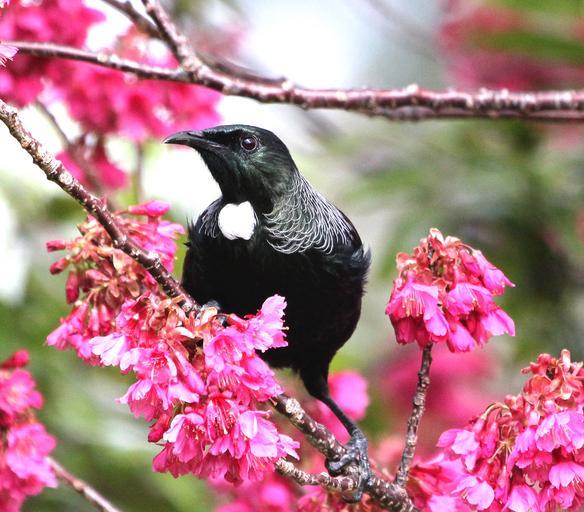MAKE A MEME
View Large Image

| View Original: | IMG_5271_(2)1.jpg (1631x1430) | |||
| Download: | Original | Medium | Small | Thumb |
| Courtesy of: | www.flickr.com | More Like This | ||
| Keywords: tui new zealand newzealand birds nature blossom pink outdoor plant bird tree colour animal new zealand Spring is in the air, NZ Tui Tūī are unique (endemic) to New Zealand and belong to the honeyeater family, which means they feed mainly on nectar from flowers of native plants. Found in: Forests throughout New Zealand, towns, and offshore islands Threats: Predation, habitat loss Tūī are common throughout New Zealand in forests, towns and on off-shore islands. They are found in native forests, bush reserves and bush remnants. They are adaptable birds, and can also be found in suburban areas, particularly in winter if there is a flowering gum about. These attractive birds can often be heard singing their beautiful melodies long before they are spotted. If you are fortunate to glimpse one you will recognise them by their distinctive white tuft under their throat. This tuft contrasts dramatically with the metallic blue-green sheen to their underlying black colour. Facts Tūī are unique (endemic) to New Zealand and belong to the honeyeater family, which means they feed mainly on nectar from flowers of native plants such as kōwhai, puriri, rewarewa, kahikatea, pohutukawa, rātā and flax. Occasionally they will eat insects too. They are important pollinators of many native trees and will fly large distances, especially during winter for their favourite foods. Tūī will live where there is a balance of ground cover, shrubs and trees. They are quite aggressive, and will chase other tūī and other species (such as bellbird, silvereye and kereru) away from good food sources. Spring is in the air, NZ Tui Tūī are unique (endemic) to New Zealand and belong to the honeyeater family, which means they feed mainly on nectar from flowers of native plants. Found in: Forests throughout New Zealand, towns, and offshore islands Threats: Predation, habitat loss Tūī are common throughout New Zealand in forests, towns and on off-shore islands. They are found in native forests, bush reserves and bush remnants. They are adaptable birds, and can also be found in suburban areas, particularly in winter if there is a flowering gum about. These attractive birds can often be heard singing their beautiful melodies long before they are spotted. If you are fortunate to glimpse one you will recognise them by their distinctive white tuft under their throat. This tuft contrasts dramatically with the metallic blue-green sheen to their underlying black colour. Facts Tūī are unique (endemic) to New Zealand and belong to the honeyeater family, which means they feed mainly on nectar from flowers of native plants such as kōwhai, puriri, rewarewa, kahikatea, pohutukawa, rātā and flax. Occasionally they will eat insects too. They are important pollinators of many native trees and will fly large distances, especially during winter for their favourite foods. Tūī will live where there is a balance of ground cover, shrubs and trees. They are quite aggressive, and will chase other tūī and other species (such as bellbird, silvereye and kereru) away from good food sources. | ||||